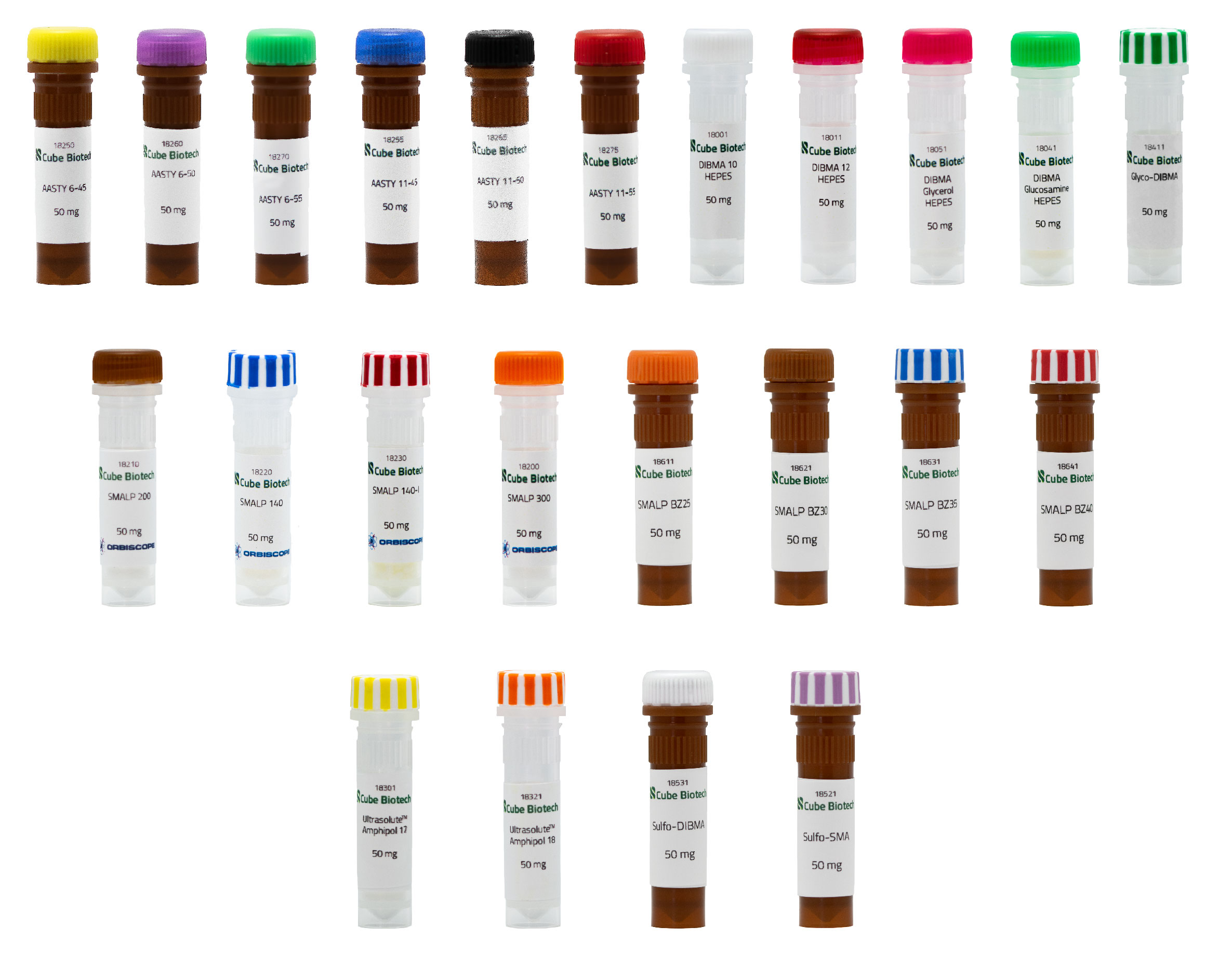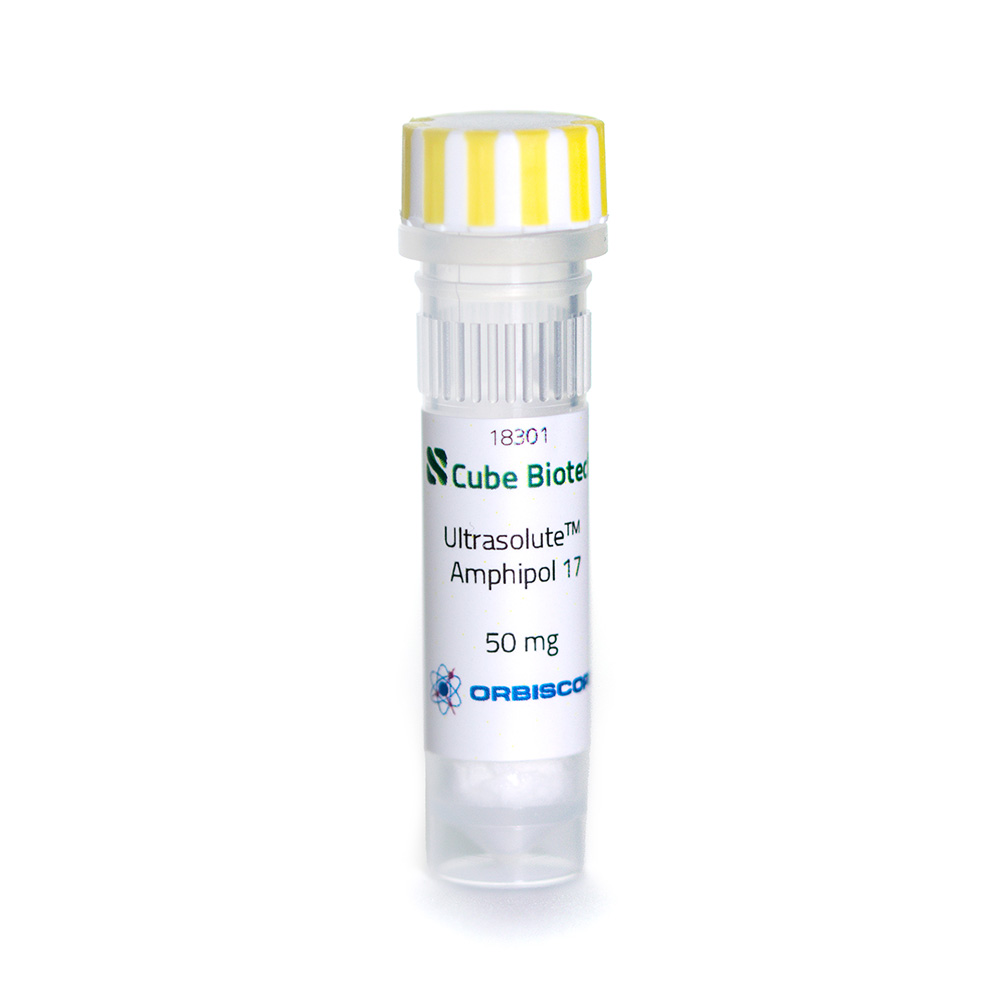Ultrasolute™ Amphipol
A new generation of Amphipols is here. They differ from the old Amphipols mainly by the replacement of linear octyl chains for hydrophobic, saturated cycles (Marconnet, Michon, and Le Bon et al. 2020). Due to this change, the polymer remarkably improves its ability to extract membrane proteins from a biological membrane, regardless of the membrane and the protein of interest, while maintaining the native structure of the target. Copolymers provide a hydrophobic surface facing the lipids, and a hydrophilic surface on the outside. This setup makes nanodiscs highly soluble in aqueous solutions and allows for the solubilization of membrane proteins in the absence of detergents. The complex from UltrasoluteTM Amphipol and membrane protein can be used with many biophysical assays, such as SDS-PAGE, SEC, Western Blot, UV/Vis spectroscopy, and many chromatographic procedures. As a secondary possibility, the products can be used to create 100% artificial nanodiscs. Phospholipids such as dimyristoyl-glycero-phosphocholine (DMPC) or palmitoyl-oleoyl-phosphatidyl-choline (POPC) have been proven to work here in combination with sodium cholate.





